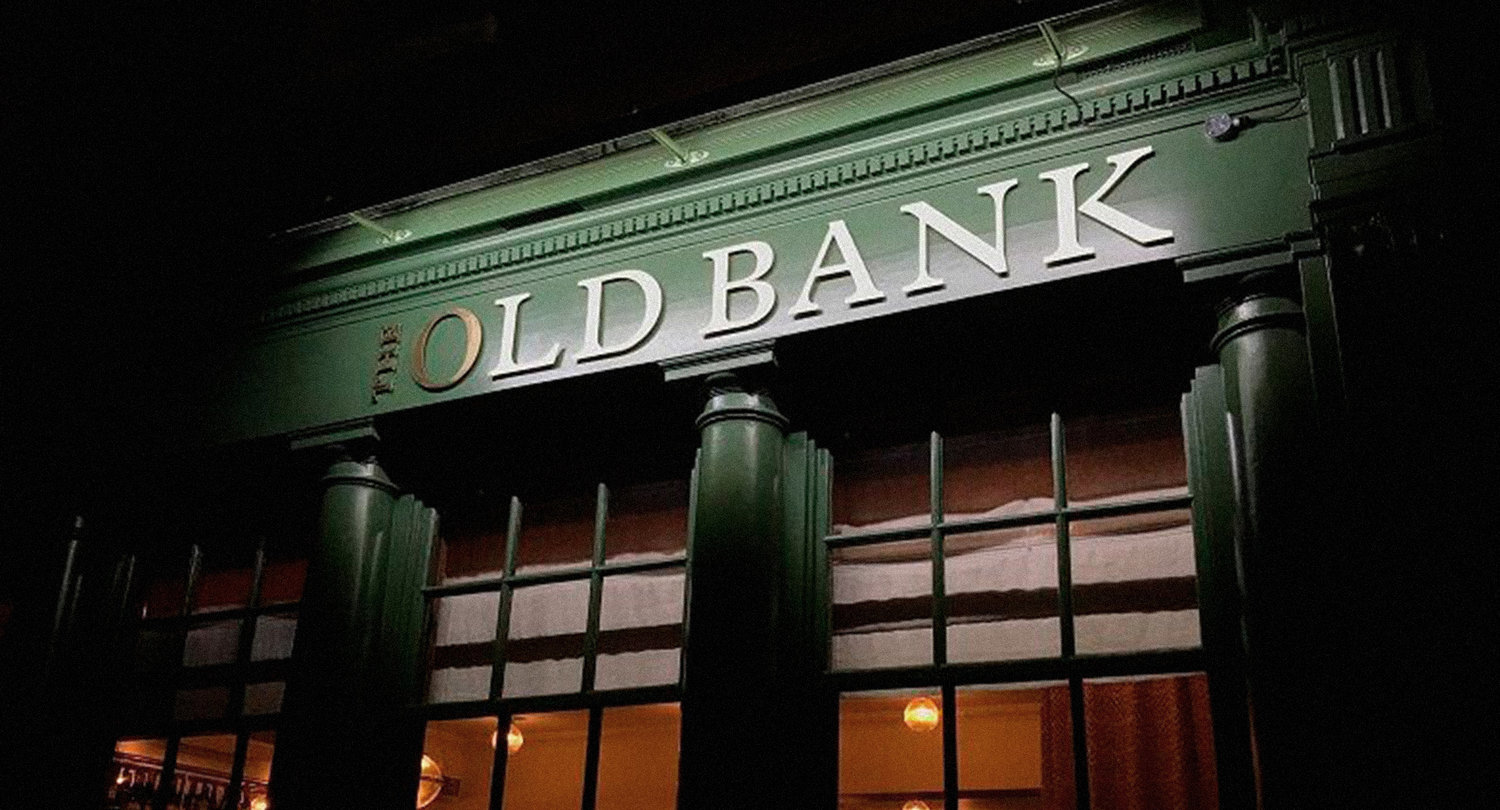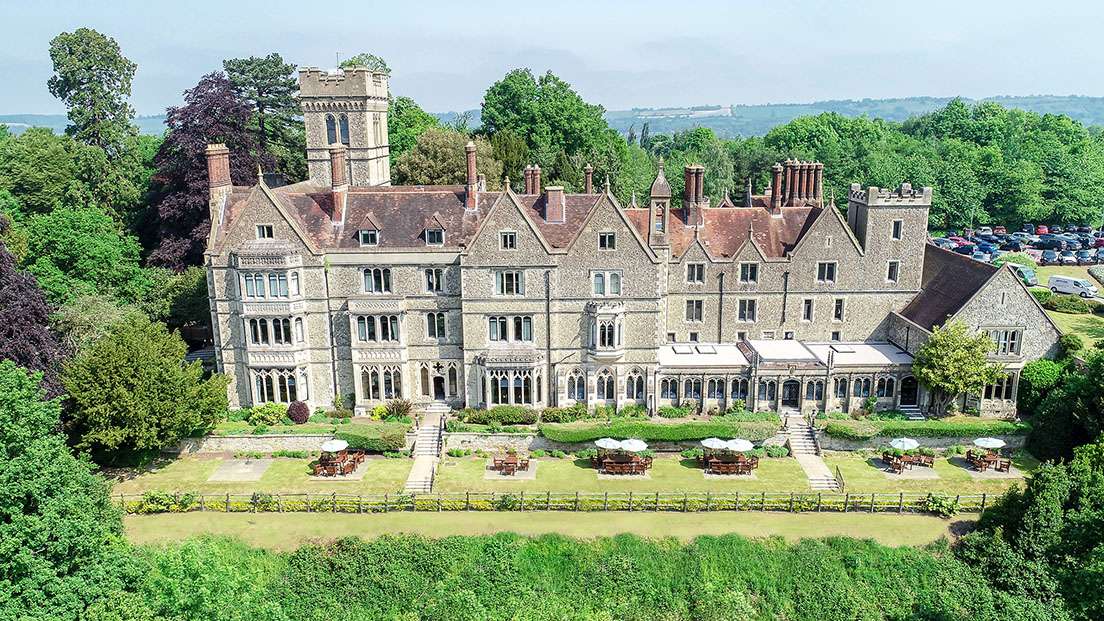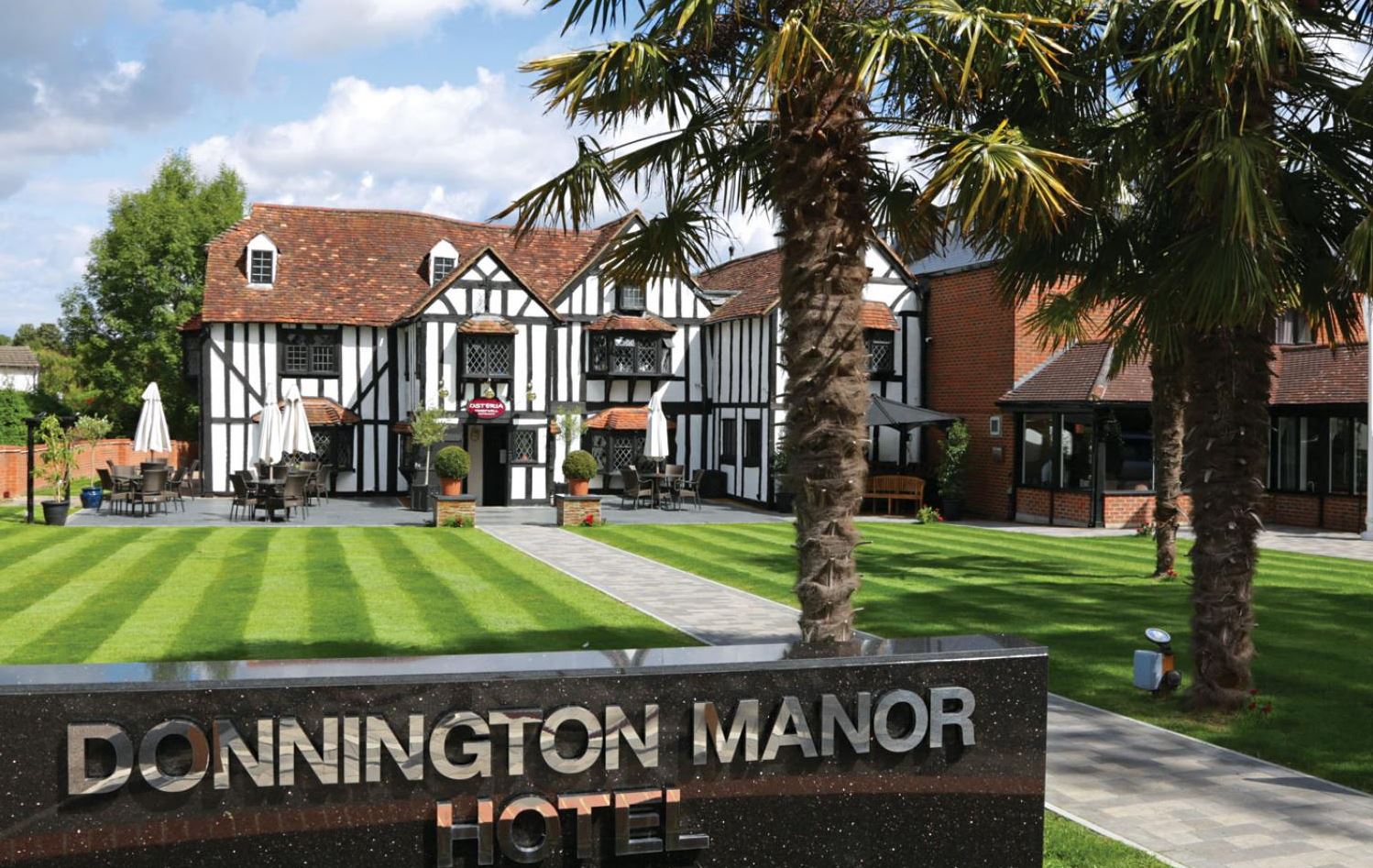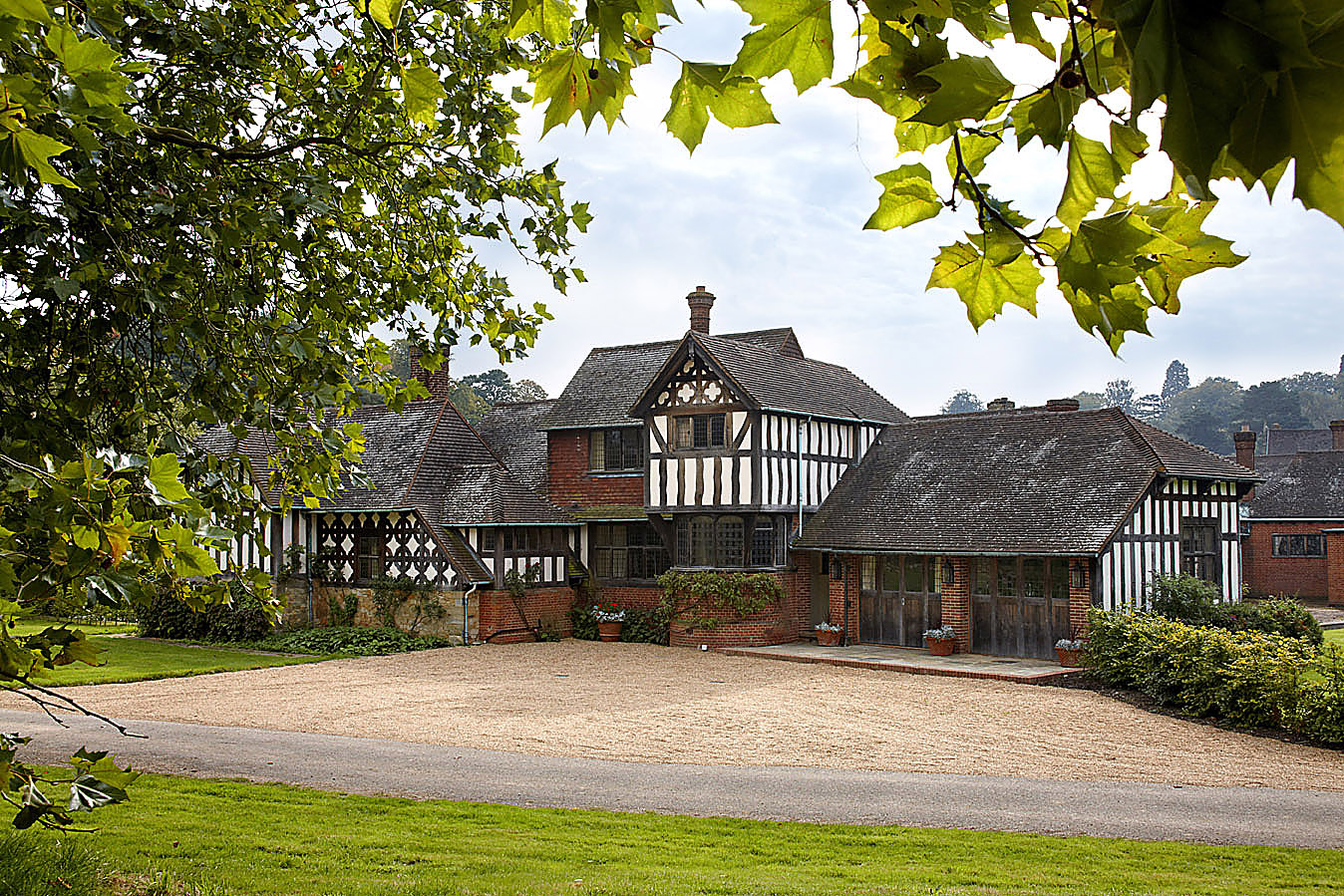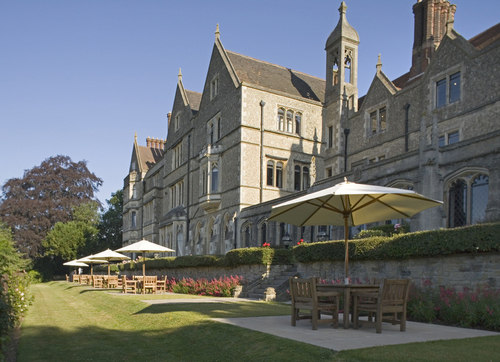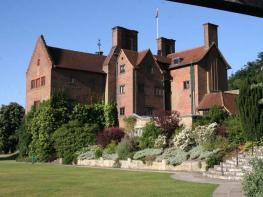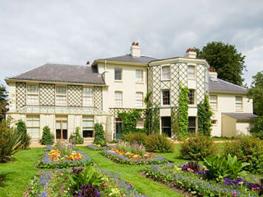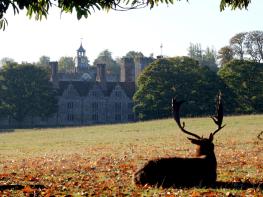Donnington Manor Hotel offers comfortable rooms, modern in style. There is a range of function…
Churchill's hideaway at Westerham

5 miles (8kms)
About the walk
It might be right in the heart of the Kentish commuter belt, but there's something timeless and deliciously rural about Westerham. It would be easy to imagine that the village has slept peacefully for centuries, undisturbed by the outside world. But during the Second World War, fighter aeroplanes frequently darkened the skies above Westerham, as pilots from nearby Biggin Hill airfield battled overhead to save Britain from invasion.
By coincidence, Winston Churchill's country retreat was in Westerham and this walk takes you right past the entrance. Churchill (1874–1965) bought Chartwell in 1922 after losing his parliamentary seat, and at a time when many thought that his political career was over. The house, which required extensive renovation, offered outstanding views over the Weald of Kent. By the time Churchill was re-elected in 1924, Chartwell was the family home. When Churchill was made Chancellor of the Exchequer in 1924 his official residence was in Downing Street. However, he would return to Chartwell at weekends and would dictate budget proposals in his bath.
In 1929 the Conservative government lost power and once again it looked as if Churchill's career was over. He turned his energies to writing (he had always been a prolific author) and would work for hours in his study. His daily routine at Chartwell was a fascinating mixture of hard work and hedonism. He wouldn't get up until about 11am, preferring to dictate letters and articles to his secretaries while still in bed. After bathing, he'd walk in the garden before going to his study to work until lunch – which would usually be a grand affair with champagne, brandy and cigars. Churchill would return to his study for a few hours, before going back to bed at 5pm for a nap. After dinner (distinguished guests included Charlie Chaplin and T E Lawrence – who sat at the table dressed as an Arabian warlord), he would return to his study and work into the early hours, sometimes dictating a phenomenal 3,000 words in one session.
When war was declared, Churchill was again offered a ministerial position and in 1940 he was made Prime Minister. After the war Churchill returned to Chartwell and spent his last years here, writing in the study, painting and pottering in the garden.
Walk directions
From the church in Westerham, walk up to the village green, then cross over and head up Water Lane opposite the statue of Churchill. Go over a little stone stile, through a gate and straight ahead across the meadow to a kissing gate. Continue into a second meadow and, about half-way across, turn left and go through a squeeze stile that is well hidden in the hedge.
Walk down a narrow fenced path to a road, turn right and continue to a patch of common on the left-hand side. Turn left up a metalled lane, signed to French Street, and follow the tarmac lane through the trees to this sleepy hamlet.
Walk past April Cottage and Appletree Cottage (which are as pretty as they sound) then follow the bridleway that veers to the right. Where it forks take the left-hand path, then follow the Greensand Way as it winds through the woods, crossing a minor road. Eventually come to another road; the entrance to Chartwell is on your immediate left.
Cross the road, go up some steps and follow the Greensand Way again. Eventually it bears to the right and comes to a main road, Mariners Hill. Cross over and follow the Greensand Way – take care not to slip, as it can be muddy. Follow the path round to the left and up to a very old brick house, called 'The Warren'. Now follow the tarmac track downhill and turn sharp right at a bench, following the Greensand Way left back into woods. Cross a track, then at the next junction, turn right to pass an isolated cottage. Go through a gate and keep left with the Greensand Way at the fork of paths.
Eventually the landscape opens out. Go through a gate, and then keep going straight ahead through two more gates. There are lovely views of Westerham ahead. Go through the metal gate, head downhill and bear left to pass a house and a pond. In a few paces, fork right along a track, which narrows to a tarmac path, and turn left at the road to reach the main street. Turn right and walk back to the starting point.
Additional information
Mainly well-signposted woodland paths and bridleways, can be very muddy, short sections on roads
Well-wooded commons and some meadows, excellent on crisp autumn days
Some sections on lead; likely to see horses and grazing animals
OS Explorer 147 Sevenoaks & Tonbridge
Car park or on-street parking in Westerham village centre
Along Fuller's Hill in Westerham
WALKING IN SAFETY
Read our tips to look after yourself and the environment when following this walk.
Find out more
Also in the area
About the area
Discover Kent
The White Cliffs of Dover are an English icon – the epitome of our island heritage and sense of nationhood. They also mark the point where the Kent Downs AONB, that great arc of chalk downland stretching from the Surrey Hills and sometimes known as ‘the Garden of England’, finally reaches the sea. This is a well-ordered and settled landscape, where chalk and greensand escarpments look down into the wooded Weald to the south.
Many historic parklands, including Knole Park and Sir Winston Churchill’s red-brick former home at Chartwell, are also worth visiting. Attractive settlements such as Charing, site of Archbishop Cranmer’s Tudor palace, and Chilham, with its magnificent half-timbered buildings and 17th-century castle built on a Norman site, can be found on the Pilgrim’s Way, the traditional route for Canterbury-bound pilgrims in the Middle Ages.
In the nature reserves, such as the traditionally coppiced woodlands of Denge Wood and Earley Wood, and the ancient fine chalk woodland of Yockletts Bank high on the North Downs near Ashford, it is still possible to experience the atmosphere of wilderness that must have been felt by the earliest travellers along this ancient ridgeway.
Nearby stays
Restaurants and Pubs
Nearby experiences
Recommended things to do
Why choose Rated Trips?
Your trusted guide to rated places across the UK
The best coverage
Discover more than 15,000 professionally rated places to stay, eat and visit from across the UK and Ireland.
Quality assured
Choose a place to stay safe in the knowledge that it has been expertly assessed by trained assessors.
Plan your next trip
Search by location or the type of place you're visiting to find your next ideal holiday experience.
Travel inspiration
Read our articles, city guides and recommended things to do for inspiration. We're here to help you explore the UK.





